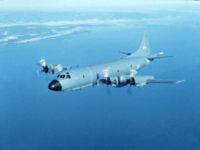CP-140 Aurora
In order to patrol the world's longest coastline, Canada needs an Aircraft with some very long legs.
Meet the Aurora, a long-range patrol Aircraft able to fly over 9,000 km/5,000nm without refueling and Canada's only strategic airborne land and sea surveillance Aircraft.
Designed originally for anti-submarine warfare, the Aurora remains capable of detecting the latest generation of stealthy submarines. But its multi-role capability means it's also ready to tackle a variety of different missions.
Modernization
The Aurora Incremental Modernization Project (AIMP) was begun in 1998, and is planned to run until 2010, with an overall budget of $1.45 billion. AIMP is an amalgamation of 23 individual projects, grouped in four chronologically consecutive “blocks”, and overseen by the Aurora Project Management Office. Among the goals is to turn the CP-140 into a multimission platform that can provide over-land surveillance, reconnaissance and intelligence-gathering capabilities in addition to its traditional maritime roles.
It is estimated that AIMP-improved CP-140s will be able to operate until approximately 2025.
Block 1
Block I of the AIMP covers replacement/upgrade of HF (high-frequency) radio gear, cockpit voice recorder, flight data recorder, and the SRX antennae associated components.
Block 2
Block II comprises an upgrade of the Navigation Capability Group (including a new horizontal situation indicator and flight direction indicator, Global Positioning System, inertial navigation system, autopilot, radar altimeter, transponder, and Aircraft Collision Avoidance System).
Block 3
Block III involves an upgrade to the Communication Capability Group (three new VHF/UHF radios, VHF/FM modernization, and a new satellite-communications-based radio), the Data Management System, and the Sensor Capability Group (including a new electro-optical system, electronic support measure system, magnetic-anomaly detection system, imaging radar, and operational mission simulator).
Block 4
Block IV is tentatively planned to incorporate a new Defensive Early Warning System (DEWS) and a stand-off air-to-surface missile system, but final approval for these elements has not yet been given. Block IV will also include extensive software upgrades for Block III system elements.
